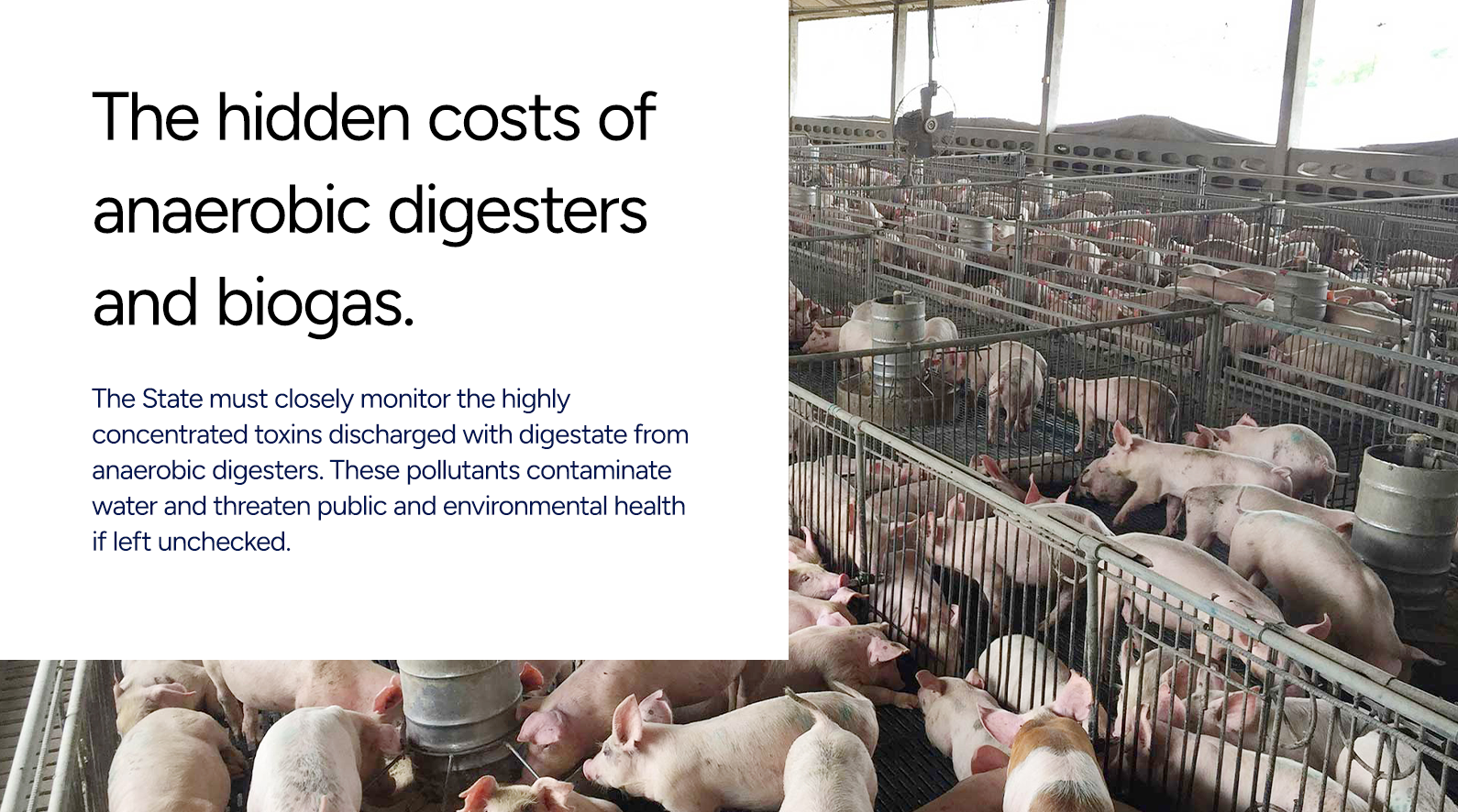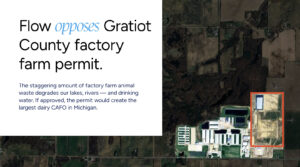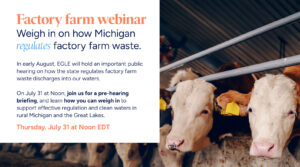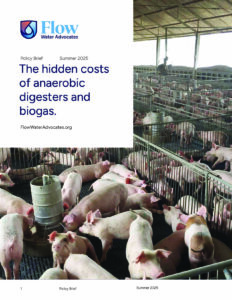
Anaerobic digesters are facilities that decompose organic waste, separating biogas from a sludge called “digestate.” Biogas can be used on-site, paired with a facility like a livestock confinement, or processed into purified pipeline-grade biomethane for electricity or transportation. While biogas can be part of a sustainable farm operation, it has many potential shortfalls that must be evaluated carefully to protect the public interest.
On concentrated animal feeding operations (CAFOs), a digester may be a cover on a cesspit. After the methane is captured, CAFO operators spread untreated digestate — which may contain biological hazards like thermotolerant, antibiotic-resistant E. coli bacteria — onto farm fields as “fertilizer.” Digesters fed by sources like municipal food waste may produce digestate that is contaminated by high levels of heavy metals and toxic compounds like PFAS and PFOS, which may then be sold or given away to spread on fields.
Download the PDF below to learn more!
Download our policy brief: The hidden costs of anaerobic digesters and biogas
This worksheet breaks down anaerobic digestion to better understand the impacts that CAFOs inflict on the environment, the animals, and the threat to public health in communities across Michigan.
Explore more about CAFOs

Flow Water Advocates opposes Gratiot County CAFO permit

Factory farm webinar: Weigh in on how Michigan regulates factory farm waste.

A win for water: Fremont Regional Digester shut down

What is nitrate pollution, and how does it affect drinking water?

Manure maelstrom: the Great Lakes are drowning in livestock waste


